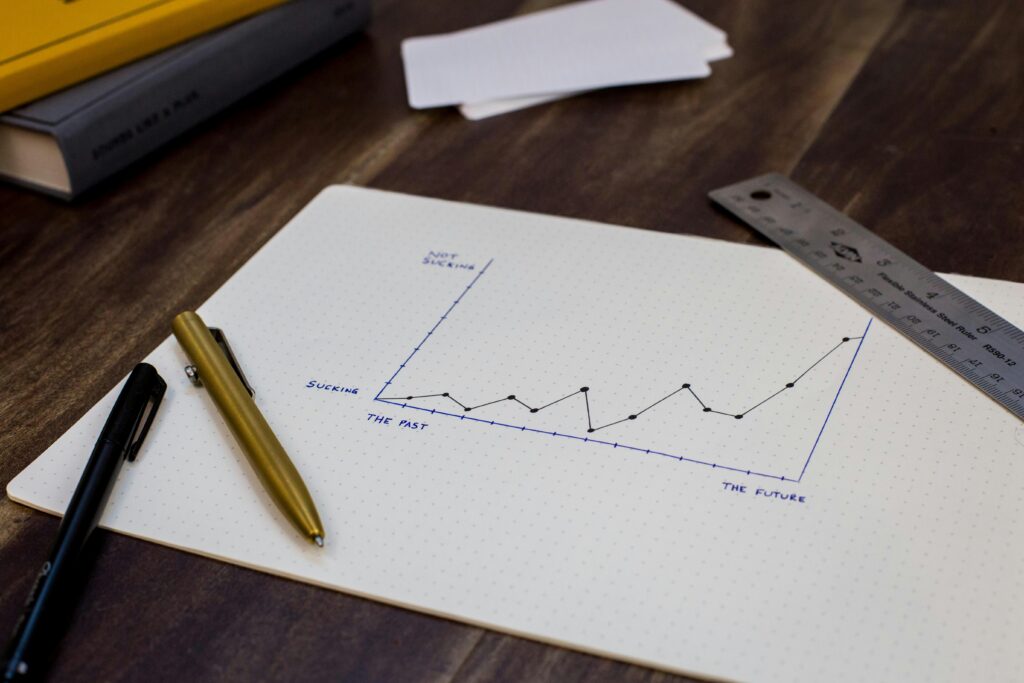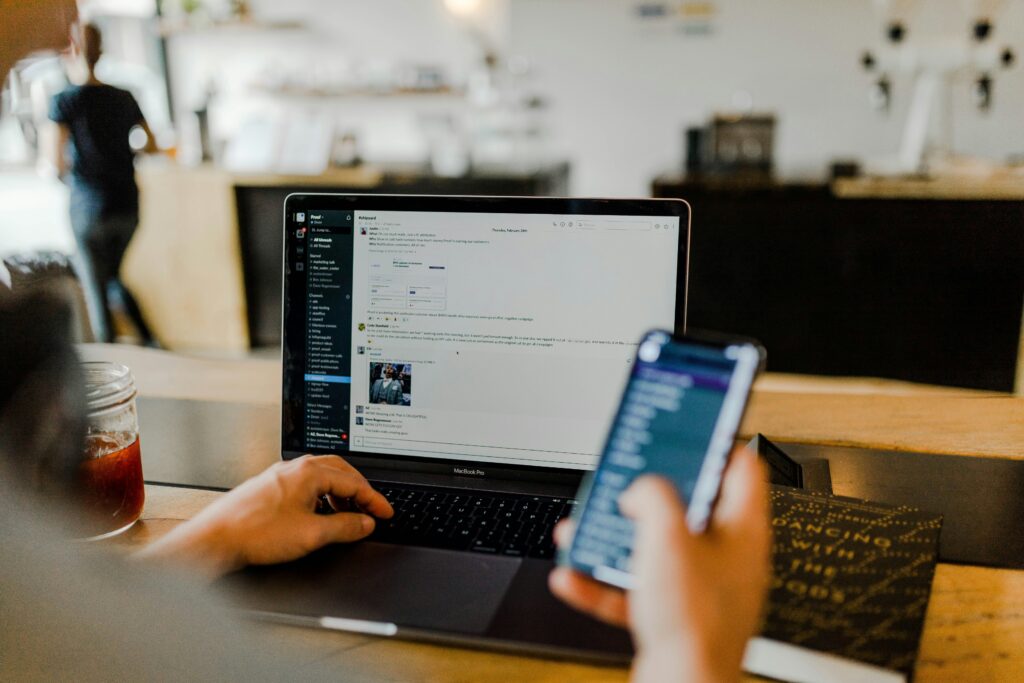Have you ever wondered why your time passed so fast? You came to work, acknowledged that it’s already lunchtime, and notice you’ve accomplished little. According to a survey by Vouchercloud, 79% of office workers report not being productive during the entire working day. Even worse, the average productive time is less than three hours. But let’s be honest. Even if you are one of the 21% who think they are productive, you still think about how you can improve. Let’s explore how to improve this.

Throughout my career, I always thought: How can I increase my output?
When I worked as a dental technician a few years ago, it was all about the physical production of dentures/crowns,.. In the evenings, I presented my finished work for final inspection. Later in my career, I went straight to the dentist to have them fitted. Every day I could see how much I had achieved. At that time, my ambition grew immeasurably when I was about to complete another job. The number on the clock no longer mattered. I found ways how to batch my work, so I would be faster. At a later stage of my career, during the time of scaling the dental laboratory at PlusDental, I finally learned the theory behind what I rudimentarily but somehow successfully did over the prior years. It was all about lean processes! From workshops on how jobs should be tackled or connected to others, we defined the perfect set-up for the production departments. We measured the time it takes for each step to analyse where we could cut time. Now you might say, well that’s a production environment, but I work all day in an office. I can tell you some tricks on how you can also save time there.
Manage your day
Start your morning by checking your schedule. What are must-do tasks, and what are tasks you like? Make yourself a rough plan of the day. You don’t need to put it on paper, but at least prepare mentally for the day. Sometimes I already do that at home, while drinking my green tea. This helps me to get into the right mood and avoid situations where a meeting starts early but I am not prepared. Balance your day with a mix of tasks you enjoy and those you don’t. Tackle the less enjoyable tasks early to prevent procrastination. Remember the sense of achievement you feel when completing a disliked task on time.

Have you ever heard about the Pareto principle? It explains that you can reach 80% of your results within 20% of your time. For example, the book: “The 80/20 Principle: Achieve More with Less” by Richard Koch explains that most projects finish the tasks within the last 20% of the time. On the other hand, you need to ask yourself, do you need to finish the last 20%, or is 80% actually good enough?!
Meetings
Meetings can be timely, unproductive and costly. As you may know, there are various kinds of meetings: meetings where decisions need to be made, informative meetings, retrospective meetings, brainstorming meetings, and so on. Let me go into detail about meetings where decisions need to be made. Besides the general rule of, for example, having a clear agenda provided, the content of the agenda is also crucial. Fist of all, make sure to cover the points of the agenda before diving into other topics. In addition to that, if an agenda is too full and not all topics are of importance to all participants, the meeting is less efficient. This was also analysed by A. Garcia et. al. 2003. It can be costly for the company if such ineffective meetings take place regularly. Therefore, make sure to only invite relevant people. On the other hand, don’t forget to invite all decision makers.
Timekeeping is also a crucial aspect. Especially in a vivid discussion, it might happen that you have more to say and to discuss than the time allows. Make sure to schedule another appointment and not exceed the schedule. This also helps to digest the topic and be more effective in the next meeting. By the way, the timekeeping part is also as important when doing presentations. I, for example, set myself a timer five meetings before the time ends, so that I know when I need to hurry up.

Coming to the topic of remote versus direct face-to-face meetings. Especially after Covid, many analyses took place. The outcome of A. Lantz’s 2010 research showed that remote meetings are more task oriented. Not having too many distractions can help in such meetings. Nevertheless, other research, like the one from J. Politis in 2003, shows that if there is a trusted connection between participants, the information exchange is increased. Which leads me to the conclusion, that remote participants should preferable know each other in advance. Afterwards they can work more effective on specific goals. Therefore, let’s drink a beer and get connected!
Usage of Tools
Make use of the right tool in the right situation. Chats like Slack or Teams should be used for quick questions or information. I made the mistake of overusing these tools in the past. This led to either confusion or emotional disconnections. If information is personal, a discussion could pop-up, or the question is too complex, make a call. Either directly if it’s an urgent or quick question, or send out a meeting invitation. Use e-mails to document, for example, meeting outcomes, progress updates, not-so-urgent, simple understandable questions.

Time blocking
In my opinion, it is important to block time for specific tasks. By being in the flow state, you can work effectively and focused. The best way I perform that is by making a blocker in the calendar, so that no one calls me during that time. And as soon as the blocker has finished, I can move on with other tasks. Try to go as often into the flow state as often as possible, so you can work as efficiently as possible on your tasks. For me, this works best when I’m at home. So that I have no other distractions.
From my perspective, you don’t need to specifically block time for e-mails, but it is important to switch off the e-mail pop-ups. If something is urgent, you would be called or messaged via chat. Jumping off your tasks every time an e-mail pop-ups can be super inefficient! At least this is my perception.
In general, try to work in batches. Answer your emails twice a day and schedule regular meetings on the same day with short breaks in between. You can even combine your trip to the bathroom with filling up your bottle of water. At least if the workspace concept allows it. Movement also helps for brain activity, which at the end also helps to work for effective. But maybe more about that in another, future article.
Job Satisfaction
“Rates of absenteeism are one indicator of employee commitment that
affects organisational productivity.” L. Golden 2012. Furthermore, it can be said that if an employee is more satisfied with the job, productivity increases. D. Kozjek et al. 2017 & J. Singh et al. 2013. Sounds easy, right? But according to a Gallup survey, only 23% of employees are engaged. This implies that no employee will work on self-efficiency if there’s no proper job-employer-employee match.
Try to find the job you like, so you can actually be more effective. Because at the end, we try to increase what we like not what we dislike.

Implementing these strategies can help you take control of your time and enhance your productivity. Remember, small changes can lead to significant improvements. Find the right balance in your tasks, manage your day efficiently, and use the appropriate tools to stay focused. By doing so, you can reduce those moments of wondering where the time went.
Comments are closed